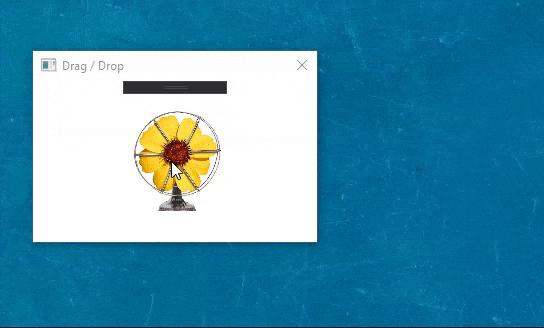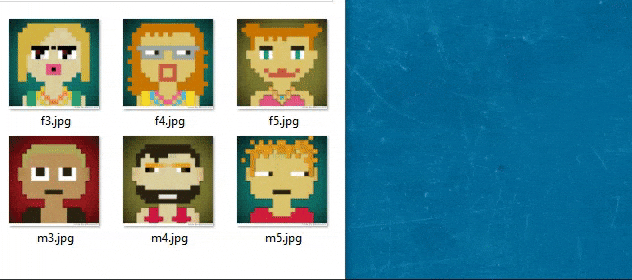Tengo una pequeña aplicación WPF que tiene una ventana con un control de imagen. El control de imagen muestra una imagen del sistema de archivos. Quiero que el usuario pueda arrastrar la imagen y soltarla en su escritorio o en cualquier lugar para guardarla. Funciona bien
Pero quiero mostrar una miniatura de imagen pequeña junto con el cursor del mouse cuando el usuario la arrastra. Al igual que arrastramos una imagen del explorador de archivos de Windows a otro lugar. ¿Cómo lograrlo?
Comportamiento actual de arrastrar / soltar
Comportamiento deseado
Aquí está mi código XAML
<Grid>
<Image x:Name="img" Height="100" Width="100" Margin="100,30,0,0"/>
</Grid>Aquí está el código C #
public partial class MainWindow : Window
{
string imgPath;
Point start;
bool dragStart = false;
public MainWindow()
{
InitializeComponent();
imgPath = "C:\\Pictures\\flower.jpg";
ImageSource imageSource = new BitmapImage(new Uri(imgPath));
img.Source = imageSource;
window.PreviewMouseMove += Window_PreviewMouseMove;
window.PreviewMouseUp += Window_PreviewMouseUp;
window.Closing += Window_Closing;
img.PreviewMouseLeftButtonDown += Img_PreviewMouseLeftButtonDown;
}
private void Window_Closing(object sender, System.ComponentModel.CancelEventArgs e)
{
window.PreviewMouseMove -= Window_PreviewMouseMove;
window.PreviewMouseUp -= Window_PreviewMouseUp;
window.Closing -= Window_Closing;
img.PreviewMouseLeftButtonDown -= Img_PreviewMouseLeftButtonDown;
}
private void Window_PreviewMouseMove(object sender, MouseEventArgs e)
{
if (!dragStart) return;
if (e.LeftButton != MouseButtonState.Pressed)
{
dragStart = false; return;
}
Point mpos = e.GetPosition(null);
Vector diff = this.start - mpos;
if (Math.Abs(diff.X) > SystemParameters.MinimumHorizontalDragDistance &&
Math.Abs(diff.Y) > SystemParameters.MinimumVerticalDragDistance)
{
string[] file = { imgPath };
DataObject d = new DataObject();
d.SetData(DataFormats.Text, file[0]);
d.SetData(DataFormats.FileDrop, file);
DragDrop.DoDragDrop(this, d, DragDropEffects.Copy);
}
}
private void Img_PreviewMouseLeftButtonDown(object sender, MouseButtonEventArgs e)
{
this.start = e.GetPosition(null);
dragStart = true;
}
private void Window_PreviewMouseUp(object sender, MouseButtonEventArgs e)
{
dragStart = false;
}
}

DragDrop.GiveFeedback. Compruebe esto stackoverflow.com/questions/4878004/…